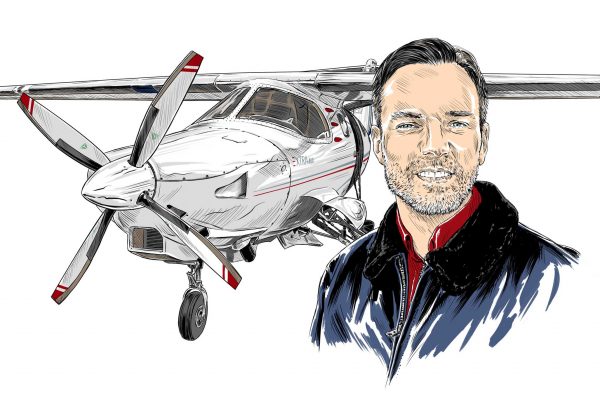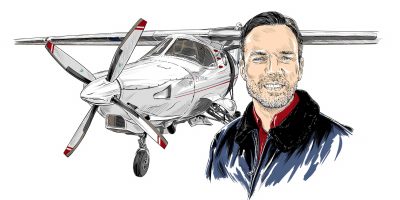I
n last month’s news you’ll have read about a development that allows hours flown in microlights to count towards revalidation by experience on a Single Engine Piston (SEP) rating attached to an EASA licence. The equivalent ‘rolling validity’ requirements for the LAPL(A) are also included. The change comes years after the suggestion was first made, with organisations such as Europe Air Sports keeping the pressure up at EASA to ensure progress. At the time of writing there are still discussions around the margins of the subject, but the following reflects the situation as of mid-June.
The change has been achieved by EASA publishing additional ‘acceptable means of compliance’ (AMC) to the Aircrew Regulation requirements for revalidation. It is not the most legally robust approach, but with national authorities historically taking differing views on the credit for hours flown in non-EASA aircraft within the EASA licensing system, this new AMC is an attempt to set out a common interpretation.
Prior to this the UK CAA position had been that hours flown in equivalent non-EASA SEPs such as vintage, ex-military or amateur-built aeroplanes could count in the EASA system, but not those gained in lighter non-EASA aircraft that fell into the UK microlight category.
“The main beneficiaries of the change will be PPL or LAPL holders who might want to do a bit of microlight flying”
The main beneficiaries of the change will be PPL or LAPL holders who might want to do a bit of microlight flying, perhaps due to cost or just to try something different. Hours gained while doing so will now count towards maintaining the privilege to fly larger aeroplanes in the SEP category. The follow-on question is whether hours flown in microlights could count towards the issue of EASA licences or ratings?
The understanding at the time of writing is ‘no’ – the change only relates to revalidation by experience for the SEP or rolling validity in the case of the LAPL. The other caveat is that the one-hour flight time with an instructor needed for revalidation cannot be in a microlight – it must be in a heavier aeroplane, albeit that it can still be a relevant non-EASA one.
Existing requirements
So how does this new AMC fit into existing requirements for flying microlights on a PPL(A) or LAPL(A)? References to ‘PPL(A)’ in this context includes higher licences such as CPL or ATPL on which an SEP rating is held.
With the existing UK microlight definition for two-seat aircraft, we are talking about machines up to 450kg mtow. A UK (rather than EASA) PPL(A) holder with SEP rating has been able to use three-axis control microlight time towards revalidation since August 2016, so the new AMC broadly brings the EASA licences into line. However, prior to flying a microlight as PIC, a UK or EASA PPL(A) with SEP rating, or LAPL(A) holder, must undertake microlight ‘differences training’ with an instructor – so to take full advantage of the new AMC, this training must be signed off first. There is no requirement to have a ‘microlight class rating’ on the licence, this is a pre-EASA concept that is no longer used for the PPL. There are also more detailed training requirements for going between different microlight control systems.
For the NPPL(A), the AMC is not relevant as it only affects EASA licences. The NPPL also has its own self-contained system of revalidation for the different ratings that can be attached to it. For holders with a ‘Simple Single Engine Aircraft’ (SSEA) rating, a ‘microlight rating’ must be added to fly microlights. However once both ratings are held, they can be kept current by doing at least one hour in each as part of the total 12 needed for revalidation.
The new EASA AMC obviously has limitations in terms of scope, but it is likely just another step on the journey towards deciding what the regulatory lines around microlights should be. Over the years the subject has become a rather messy intersection of the distinction between a microlight and a heavier aeroplane, the line between EASA and non-EASA aircraft and the requirements for revalidating ratings by experience. It is worth reflecting on the fact that the PPL(A) with SEP rating, the LAPL(A) and the NPPL(A) now all have slightly different requirements for maintaining the privilege to fly, what are often, similar aircraft.
Microlights themselves have come a long way since formal regulation was introduced in the early 1980s, and with the recent announcement that the UK microlight definition is to rise to 600kg mtow, the diversity of the sector is likely to increase.
Decisions have not yet been taken about how the change will affect licensing, but there may be scope for streamlining. For example, it may be that the microlight line, based on weight, is no longer the way to go for licensing. In the FAA system ‘weight shift control’ is a separate rating, but within the normal aeroplane, single engine (land) rating there is no distinction based on weight.
A personal thought is that while the EASA AMC is welcome within the current rule set, it is only beneficial due to the presence of revalidation by experience requirements in the first place, and the current distinctions drawn for licensing purposes that separate microlights primarily on weight.
While thinking of dusting off my FAA licence recently, I reflected on the fact that the only requirement before using any of the ratings attached to it was to have ‘accomplished a flight review given in an aircraft for which that pilot is rated by an authorised instructor…’




